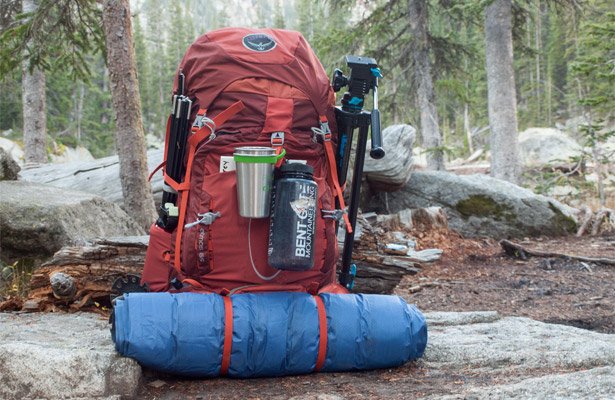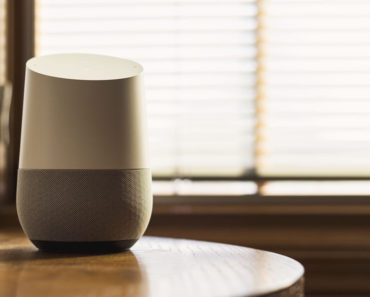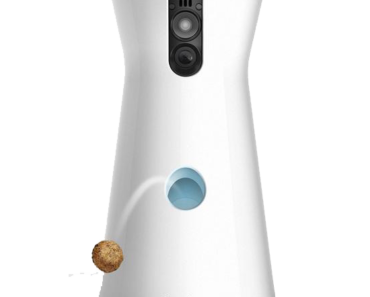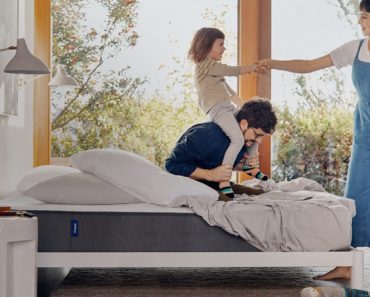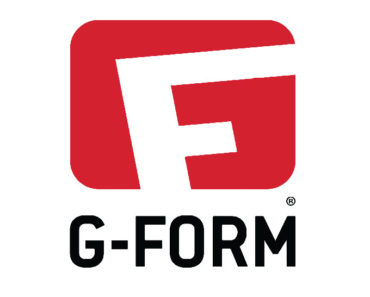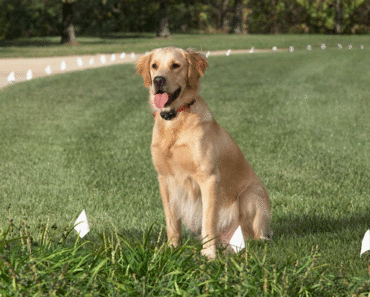The main pack is the central piece of equipment for every avid backpacker. It can make the difference between an enjoyable weekend in your favorite mountain range (the Adirondacks are our preference) and backbreaking hike out to your campsite. In the interest of avoiding the aching body that is part and parcel with most rucking trips, backpacks have tended towards minimalism and ergonomic design. Below is our top 15 list of our favorite backpacking packs; including minimalist-friendly ultralight bags to comfort-oriented options for weekend warriors and extended trips.
Osprey Atmos AG 65 ($260)
The Osprey Atmos AG 65 sits alone at the top of our Top 15 List for 2017. It is a quality balance of comfort, organization, durability, and weight. Its “Anti-Gravity” backpanel is an advancement in pack ventilation and makes it easy to dial in a good fit. Its pocket design is well laid out and it is tough enough for rough treatment while weighing in under 5 pounds. Its well-rounded design works well for anything from quick overnight trips to extended camping trips deep into the backcountry.
Bucking the trend of protruding foam panels that make contact on your back, lumbar, and hips, the Atmos AG has a single large mesh ventilation panel that makes covers your entire back and hipbelt. This yields best-in-class ventilation and the flexible mesh conforms to your back and waist. The design also manages to carry heavy gear comfortably. While the mesh is slightly less supportive than the foam on other packs, its tough to beat the features and build quality of this pack.
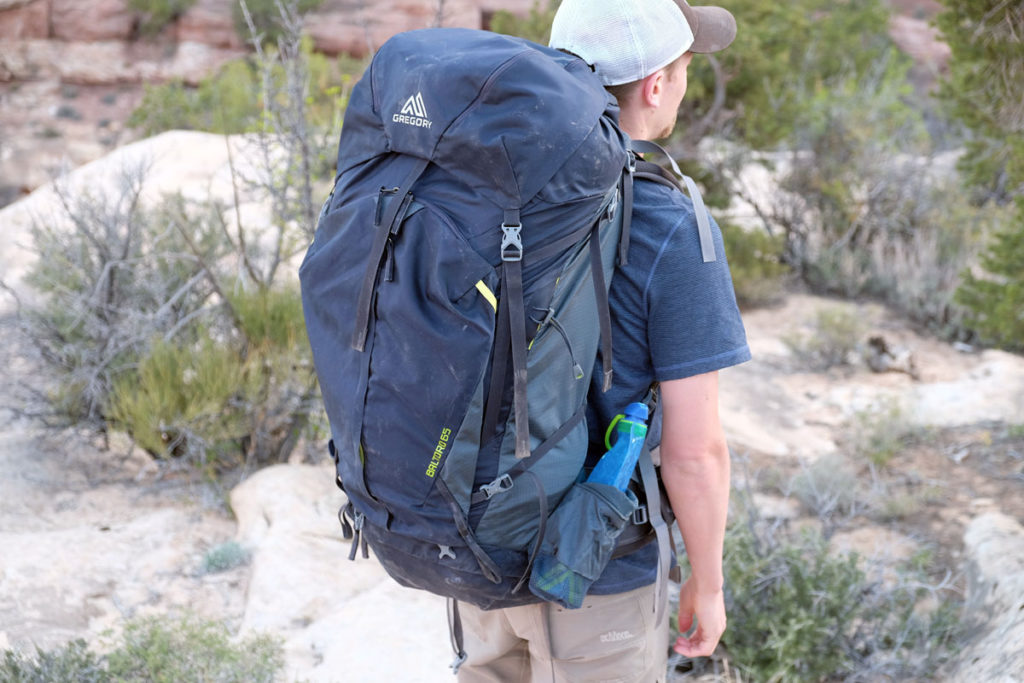
But for those looking for a pack that can haul serious loads, including long-distance trekkers, those who like to pack in a little luxury, or in our case, to haul all the gear we’re testing, the Baltoro is a favorite.
Gregory has earned a reputation for comfort over the years, and their flagship men’s Baltoro and women’s Deva packs carry on the tradition. These bags are intended to carry heavy loads with strong suspensions, firm but supportive padding, and excellent organization. If not for the weight of the Baltoro, which creeps over 5 pounds in a medium, it would be a major contender for our top spot. But for those looking for a pack that can haul serious loads, including long-distance trekkers, those who like to pack in a little luxury, or in our case, to haul all the gear we’re testing, the Baltoro is a favorite.
Outside of a relatively heavy weight, we do have a few other nitpicks with the Baltoro 65. One is back ventilation, which is merely average and falls well short of the Atmos above. Additionally, we like the idea of the hydration sleeve that converts to a daypack, but it isn’t as comfortable as we’d prefer for use as a summit bag. On the other hand, the Baltoro has an important feature missing from the Atmos above: zippered access along the front of the pack to the main compartment. All in all, we really like the Baltoro: it’s our go-to pack for when we need to carry serious weight, and its durable construction is made to outlast the lightweight competition…
Gossamer Gear Mariposa 60 ($260)
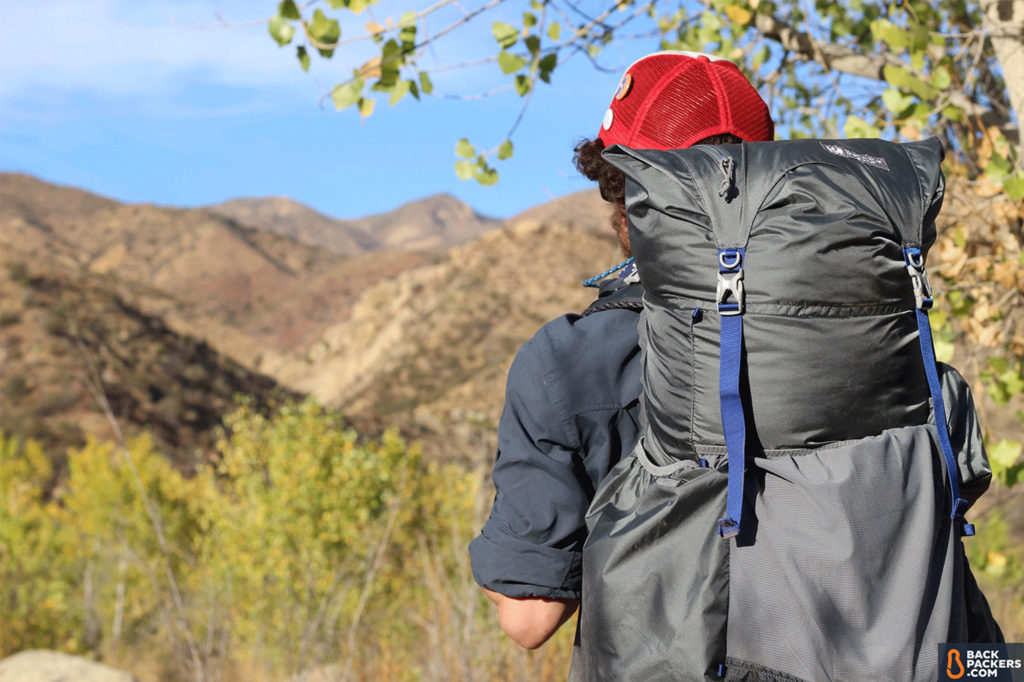
In addition to the large main compartment, the pack has a total of 7 external pockets of varying sizes, making it easy to distribute your gear.
A number of ultralight packs are designed for thru-hikers and minimalists, but our top pick is the Gossamer Gear Mariposa 60. Most impressive is how few tradeoffs there are in using this 2-pound 3-ounce bag (ours has a large frame and medium hipbelt). While brands like Hyperlite and ZPacks use Dyneema fabric (formerly cuben fiber) to cut weight, Gossamer Gear uses a light yet tough Robic nylon. Unlike our Dyneema packs, we’ve had no issues with punctures or wear from the Mariposa. It’s still smart to take extra care when bushwhacking or setting the pack down on rocks, but so far it’s the least compromised ultralight pack we’ve tested.
Organization on the Mariposa is excellent. In addition to the large main compartment, the pack has a total of 7 external pockets of varying sizes, making it easy to distribute your gear. Comfort-wise, we’ve found the Mariposa has sufficient padding and plenty of support right up to its 35-pound maximum rating. If we were to change one thing, it would be the back panel: the removable foam padding is prone to bunching and we prefer to leave it behind. Otherwise, the Mariposa stands out as the most complete ultralight pack on the market and a great option for backpackers looking to cut weight…
REI Co-op Traverse 70 ($239)
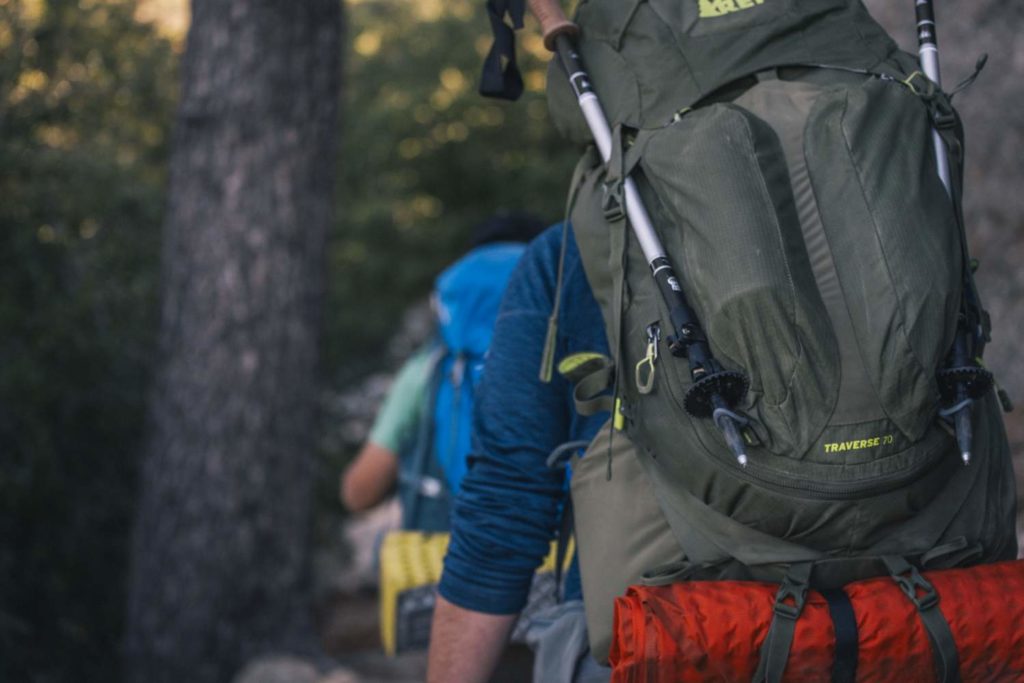
The 70-liter volume will easily go on a multi-day quest, but it compresses down really well for smaller, weekend loads.
REI’s house brand of packs consistently ramps up quality and integrated technology, year after year, while still hitting a really nice price point. The Traverse 70 is no exception. While not as premium a hauler as the top 2 picks, the foam on the shoulder straps and hip pads is noticeably high quality, and the proprietary UpLift compression technology snugs your gear in close to keep the pack well connected to you. More, a smooth j-shaped zipper offers easy access to the main compartment.
The 70-liter volume will easily go on a multi-day quest, but it compresses down really well for smaller, weekend loads. Lastly, it’s super durable, and for the volume of gear it can hold, has a very respectable empty weight. The Traverse 70 is definitely worth a look for those that need a little extra space for their backcountry escapades.
Osprey Exos 58 ($220)
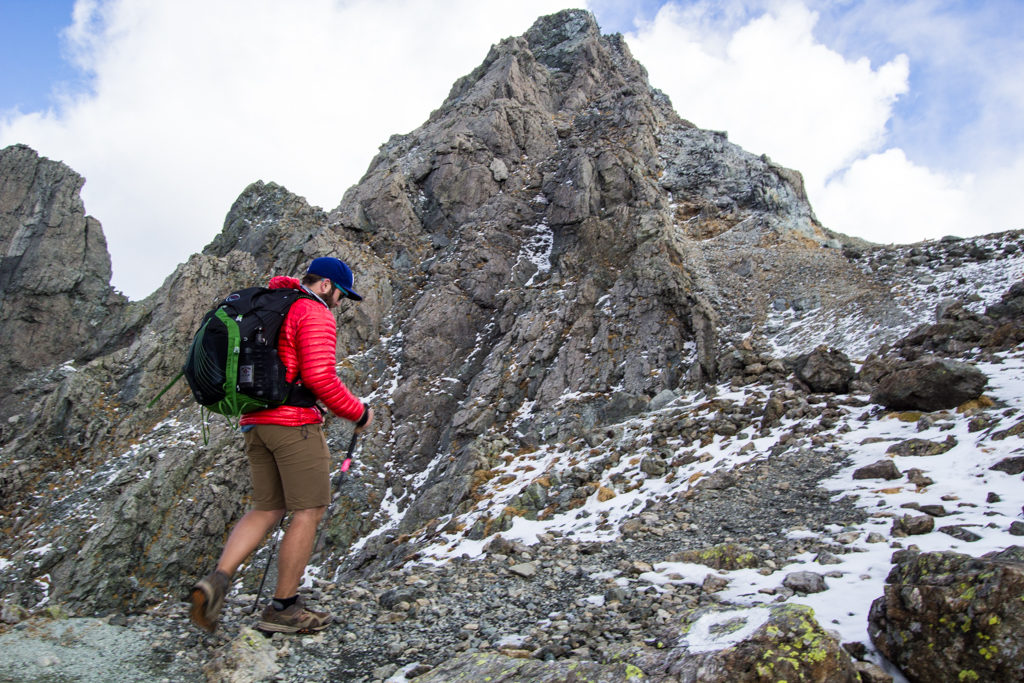
The layered mesh covering the shoulder straps and hipbelt, while looking and feeling like something that could be found on a sailboat, is actually quite comfortable and helps with breathability.
Osprey is a backpack juggernaut thanks to its great reputation for quality builds, excellent organization, and comfort. The Exos 58 is Osprey’s take on a superlight pack (also offered in 38 and 48 liter capacities), and one of our favorites in this category. While it’s widely described as an ultralight—with the 2.5-pound weight to back it up—this isn’t your typical super compromised model that can only carry a sawed off toothbrush and some Crocs. This makes it very popular with thru-hikers, and we’ve found it comfortable loaded down with more than 30 pounds of gear.
You can thank an actual suspension for the reasonable carrying abilities, complete with a peripheral frame and single metal cross support. The layered mesh covering the shoulder straps and hipbelt, while looking and feeling like something that could be found on a sailboat, is actually quite comfortable and helps with breathability. If you’re into packing light on your adventures and are willing to take extra care with the thin 100-denier fabric, the Exos 58 is well worth a look.
Hyperlite Mountain Gear 3400 Southwest ($340)

At 55 liters, the 3400 (for 3400 cubic inches) has the capacity to take on seriously long trips and has become a go-to pack for thru-hikers.
Dyneema Composite Fabrics—formerly Cuben Fiber until a recent name change—has arrived on the ultralight backpacking scene in a major way. This unique fabric is among the strongest in the world in terms of strength-to-weight ratio, resists moisture to an impressive degree, and is super lightweight. In outdoor gear, you’ll see Dyneema in ultralight backpacks and shelters with Maine-based Hyperlite Mountain Gear leading the charge. The company makes a number of backpack options depending on conditions and sizing, and we think the 3400 Southwest is their best all-rounder.
At 55 liters, the 3400 (for 3400 cubic inches) has the capacity to take on seriously long trips and has become a go-to pack for thru-hikers. In our hands, it has seen duty as an overnight and multiday backpacking pack as well as a packrafting dry bag. What stands out as most impressive is its ability to haul weight comfortably. Whereas most minimalist models are unable to handle a load, the aluminum stays and firm foam padding provide plenty of structure and support. To be clear, the design is undeniably basic, with only the main compartment and 3 exterior pockets for organization. But for those looking for a pack that can haul serious weight at only 2 pounds, the 3400 Southwest is top of the heap.
Osprey Aether AG 70 ($310)
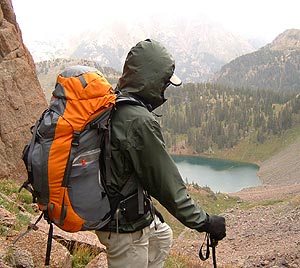
The most significant update to the Osprey Aether is the all-new suspended mesh backpanel, which shares a similar design to our top pick, the Atmos AG above.
For 2017, Osprey’s popular Aether pack is now the Aether AG. The most significant update is the all-new suspended mesh backpanel, which shares a similar design to our top pick, the Atmos AG above. Unlike the Atmos, however, the Aether is more focused on the heavy hauling and light mountaineering crowd and retains a heat moldable foam hipbelt. This gives the pack added support if you have it loaded down with gear. It’s also the more feature-rich Osprey option with a J-shaped zipper to get into the main compartment and an innovative top lid that removes and converts into a complete daypack.
The primary downside of the Aether AG 70 is its weight. The new 2017 model actually has gained a few ounces, which puts the empty weight of a medium at a hefty 5 pounds 3 ounces—more than the Gregory Baltoro above. As a result, we think the majority of backpackers will find the Atmos is the better all-around design and a better value. But the Aether still has its place in Osprey’s lineup and on our list if you haul a lot of gear, like the extra features, and need a bomber pack…
ZPacks Arc Blast 55L ($325)
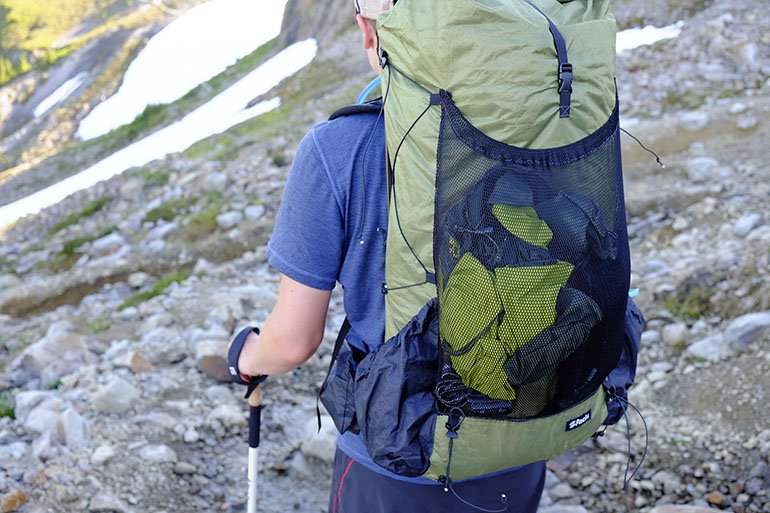 Weighing at least half a pound less than the next lightest pack on our list, the ZPacks Arc Blast takes the ultralight crown. The 55-liter model we tested comes in at an amazing 1 pound 8 ounces including optional extras like 2 hipbelt pockets. In terms of construction, the Arc Blast uses a similar water-resistant Dyneema (ZPacks calls it Cuben Hybrid) construction as the Hyperlite above but in an even more streamlined form. This accounts for the low weight but we’ve found it less durable for rough treatment and off-trail scrambling (we got a small puncture in the bottom of our Arc Blast setting it down on a rocky section of trail).
Weighing at least half a pound less than the next lightest pack on our list, the ZPacks Arc Blast takes the ultralight crown. The 55-liter model we tested comes in at an amazing 1 pound 8 ounces including optional extras like 2 hipbelt pockets. In terms of construction, the Arc Blast uses a similar water-resistant Dyneema (ZPacks calls it Cuben Hybrid) construction as the Hyperlite above but in an even more streamlined form. This accounts for the low weight but we’ve found it less durable for rough treatment and off-trail scrambling (we got a small puncture in the bottom of our Arc Blast setting it down on a rocky section of trail).
The “Arc” in the name comes from its unique tensioning system that pulls the middle of the bag away from your back, encouraging airflow and alleviating the need for a foam back panel. Combined with a carbon fiber frame, the pack has a solid structure and provides good support for loads up to about 30 pounds. We wouldn’t recommend carrying much more, however, as the padding is pretty minimal. All in all, the Arc Blast may not be durable or comfortable enough for regular weekend backpackers, but if you treat it with care, it’s an excellent option for serious thru-hikers and minimalist trekkers.
Arc’teryx Bora AR 63 ($549)
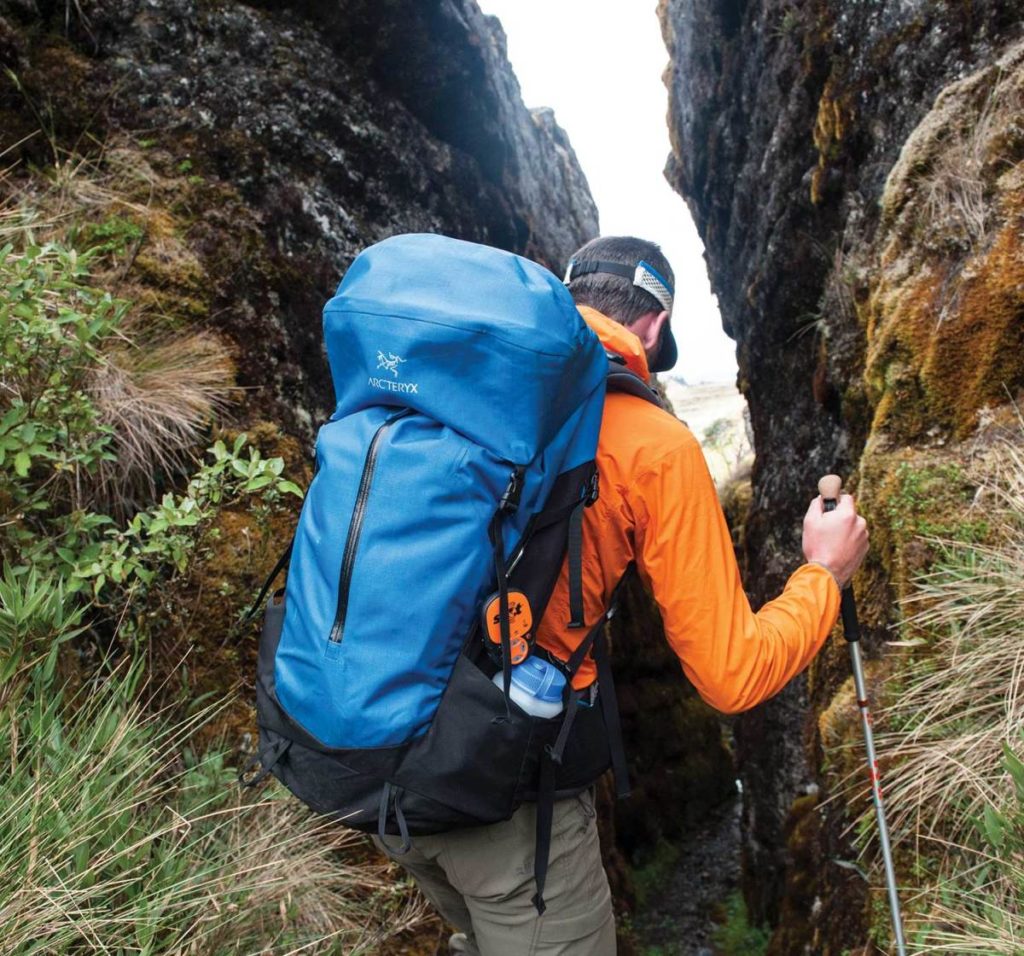
Arc’teryx is known for innovation in outdoor gear, and for 2017 they’ve turned their attention from ski boots to backpacking packs.
Arc’teryx is known for innovation in outdoor gear, and for 2017 they’ve turned their attention from ski boots to backpacking packs. Building on the excellent rotating hipbelt design of their Altra pack, the Bora AR offers even more mobility and comfort. The RotoGlide, as Arc’teryx calls it, places the hipbelt along a track in the backpanel that allows it to move up and down as you lean forward on a climb. Simply put, nothing else on the market can match this level of customization. In addition, Arc’teryx uses a durable waterproof fabric along the top and front of the bag for fantastic weather resistance. For year-round backpacking in tough conditions and on and very rough trails, you won’t find a better option.
As expected from Arc’teryx, the biggest obstacle with the Bora AR is price. Our top-rated pack, the Osprey Atmos AG, is less than half the cost of the Bora and plenty comfortable for most backpacking trips. The Arc’teryx is a better prospect if you’ll be tackling challenging terrain in inclement weather where it’s defining features—the hipbelt and waterproof materials—truly shine. But it’s a relatively small subset of the market that will value the Bora AR, which pushes it down a few spots on our list.
Granite Gear Lutsen 55 ($220)

Aside from the Re-Fit adjusters, the Lutsen is a very solid all-around pack. It’s competitively priced at $220, and despite weighing only 3 pounds 1 ounce, is capable of hauling a load up to 40 pounds.
The Granite Gear Lutsen features an innovative fit system in a lightweight and functional design. Dubbed Re-Fit, the pack’s hipbelt and shoulder straps can be adjusted to your exact hip and torso lengths with a simple but precise Velcro system. This is a notable improvement over most backpacking packs, which lack clear sizing markers and only adjust between a few fixed points. The result is a close and customized fit.
Aside from the Re-Fit adjusters, the Lutsen is a very solid all-around pack. It’s competitively priced at $220, and despite weighing only 3 pounds 1 ounce, is capable of hauling a load up to 40 pounds. We would prefer another access point to the main compartment to reach items on the bottom, but the 7 exterior pockets make it easy to store things on the outside that you want close at hand. The Lutsen line is focused on overnight and lightweight weekend trips, and is offered in 35, 45, and 55-liter models.
The North Face Banchee 65 ($239)
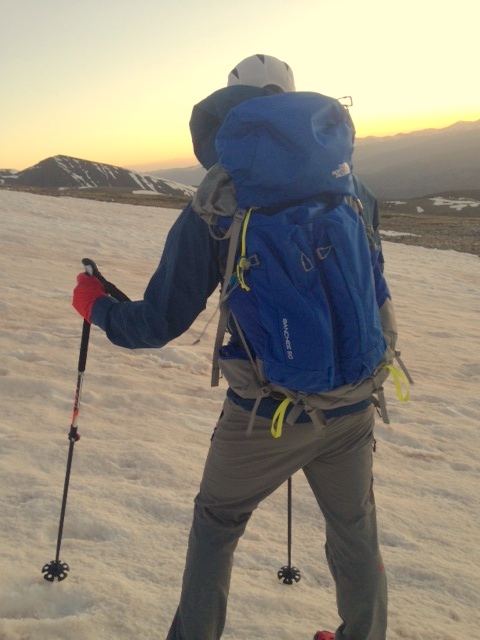
Cutting weight from a backpack usually compromises comfort and usability, but the Banchee bucks that trend with a fully featured design at well under 4 pounds.
Cutting weight from a backpack usually compromises comfort and usability, but the Banchee bucks that trend with a fully featured design at well under 4 pounds. Its exterior organization is our favorite design on this list, with 8 properly sized pockets that make it really easy to distribute the gear you want close at hand. Another typical sacrifice in appeasing gram counters is carrying comfort, but the cushioned padding and capable aluminum frame can haul a load over 40 pounds nearly as well as the top rated Baltoro.
Its natural competitor is the REI Traverse, which has the same list price and similar pocket design. The Traverse is more feature-rich, and we particularly like the main compartment access zipper (the Banchee is only a top loader), but the Banchee is over a pound lighter and has better back ventilation. It’s a tough call between them, and while we give the edge overall to the Traverse, both are excellent options at competitive prices.
ULA Circuit 68 ($235)

Utah-based ULA Equipment has gone from a relative unknown to a darling of the PCT and AT in only a few short years.
Utah-based ULA Equipment has gone from a relative unknown to a darling of the PCT and AT in only a few short years. Leading the charge is their Circuit 68-liter pack, which offers an excellent compromise of weight, durability, and functionality for the thru-hiking crowd. The design is streamlined but retains good organization with a very large front mesh pocket and zippered hipbelt compartments. The Circuit is similarly comfortable as the Gossamer Gear Mariposa 60 above, but as with the Mariposa it is recommended that you keep your pack weight under 35 pounds.
The ULA Circuit is differentiated from the other ultralight packs on this list by its durable build. The 210-denier Robic nylon is abrasion resistant and much less prone to punctures than the Dyneema Hyperlite and ZPacks designs above. The Mariposa 60 also uses Robic nylon, but it’s a lower denier and as a result a little less tough. That being said, we’ve found the Mariposa to be plenty durable and it gets the edge over the Circuit due to the significant 8-ounce weight savings. But if you’re willing to compromise a little on weight, the Circuit is an impressive high-capacity, sub-3-pound backpack option.
Deuter ACT Lite 50+10 ($189)
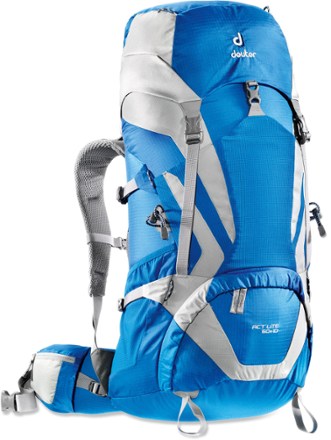
A unique system on the back panel on the ACT Lite keeps air flowing in hot weather, and the bottom compartment has a zippered divider that is handy to separate a sleeping bag or wet, sweaty clothes from the rest of the pack.
The ACT Lite comes from Deuter’s entry-level line of packs, but it’s an outstanding value for what you get. A very customizable suspension system has shoulder straps that adjust up and down quickly and easily to accommodate various torso sizes, so this pack is only offered in one size (this is a great feature for dialing in fit or if you anticipate ever sharing the pack with friends or family). The downside is that some might find it difficult to get the perfect fit, but the single pack design keeps costs down, which in turn means the overall quality of the materials stacks up well with competition that retails for $20 or more.
A unique system on the back panel on the ACT Lite keeps air flowing in hot weather, and the bottom compartment has a zippered divider that is handy to separate a sleeping bag or wet, sweaty clothes from the rest of the pack. Deuter gets the “+10” in the volume rating from the floating lid on that pack that will expand or contract as needed. It’s down a few organization pockets for our liking, but the quality of construction makes it a solid budget option.
REI Co-op Flash 65 ($199)
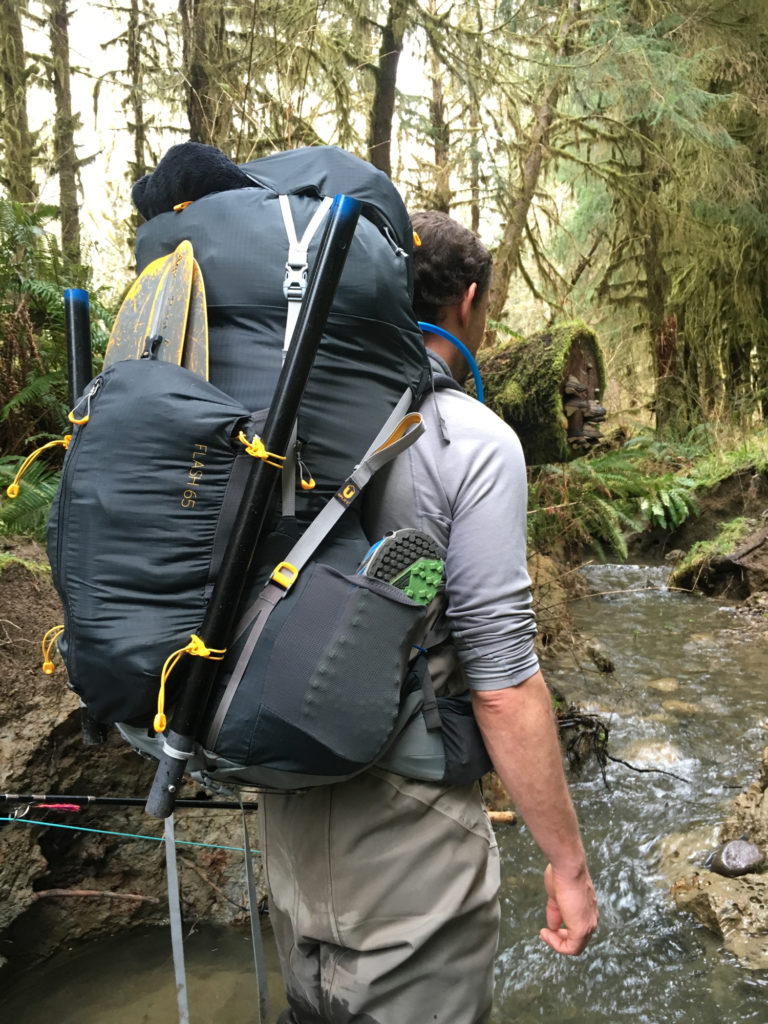
Dubbed UpLift, a series of straps along the bottom of the pack pull the load in and up, which improves carrying comfort substantially.
The prior versions of the REI Flash backpack were too flimsy and compromised to make our list, but a nifty compression system has finally made the Flash 65 a worthy competitor. Dubbed UpLift, a series of straps along the bottom of the pack pull the load in and up, which improves carrying comfort substantially. True, weight has also increased over the old Flash 62 (up about 10 ounces) but the pack is far more useful to the average weekend backpacker, and a change to the padding on the hipbelt has also made it more comfortable.
The increase in weight has decreased its appeal to ultralight seekers, however. Those folks will be much happier with the Hyperlite above or one of Granite Gear’s minimalist options. We do think the extra weight has been smartly distributed, including a large J-zipper to access the main compartment. The Flash 65 is no longer a value-priced ultralight option, but it still has a strong appeal for those wanting to cut weight without giving up too many features.
Kelty Coyote 65 ($180)
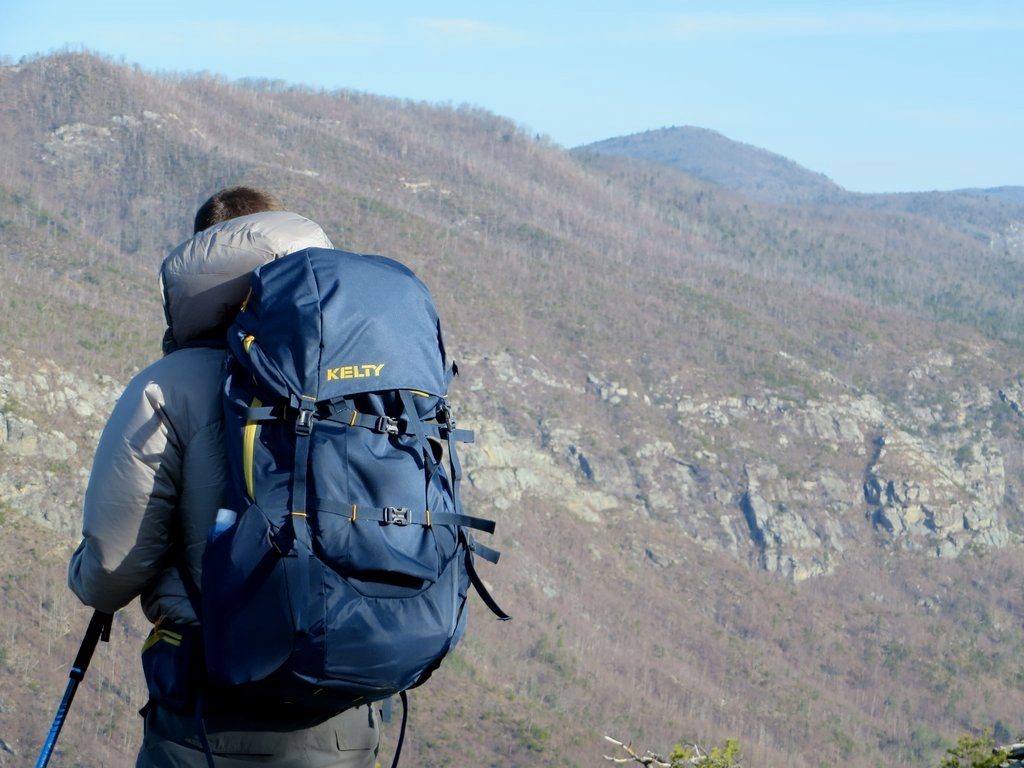
The signature feature here is the “Perfect Fit” system: instead of making the pack in a few different sizes, an on-body adjustment system allows you to dial in fit around your waist, torso, and shoulders .
Kelty generally targets the entry-level end of the camping and backpacking spectrum, but we appreciate the reasonable prices and sturdy builds. The Coyote 65 is a great backpacking pack for first-timers, weekend trips, and just about anyone else who wants to keep the tab under $200.
The signature feature here is the “Perfect Fit” system: instead of making the pack in a few different sizes, an on-body adjustment system allows you to dial in fit around your waist, torso, and shoulders (this even means that you can share the pack or lend it to a friend). You’ll find that the padding, pockets, and adjustments aren’t as high-end as the pricier packs above, and it isn’t ideal for carrying ultra-heavy loads or covering tons of miles. But it’s a versatile budget pack that may surprise you with its comfort.
